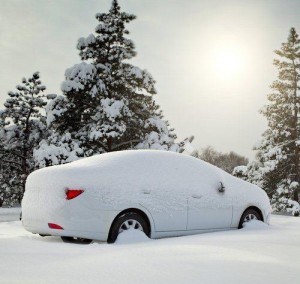5 Winter Driving Safety Tips to Avoid Accidents and Get You Where You’re Going
Written by: Ken Selander Category: Auto Accidents, SafetyWinter driving conditions are finally upon us. Follow these tips to keep your car running and to arrive safely at your destination.

- Remove ALL Frost and Snow From your Windshield, Mirrors and Rear Windows
Trust me, I understand. You rush out the door and find your car covered with frost. You can’t find your scraper and resort to raking the windshield with a credit card. You think you’ve cleared enough ice to see well, but once out on the road, you’re faced with countless blind spots and horrible visibility. Not a good idea, and not a legal move either. RCW 46.37.410 prohibits operating a motor vehicle when the windshield, side wings and rear window obstruct a clear view of the roadway. Get out and start over. - If Your Car Needs Servicing, Do It Now
It’s one thing to break down in the summer when you can use the inconvenience to enjoy some fine weather and talk to yourself about the virtues of slowing down. It’s quite another to be trapped inside your car in frigid conditions when it’s pitch dark outside and AAA or your friends seemingly disappear. If your car needs some TLC, better to bite the bullet now rather than be trapped on the roadway with other drivers navigating hazardous conditions. - Make Sure Your Battery is Up to Snuff
Cars are harder to start in the winter. Why? The cold oil in the engine isn’t as fluid as in warm weather so your battery requires more muscle to turn the engine over. Batteries also lose power as the temperature drops. You are therefore trying to start your car with less power when it needs more power. If your battery is marginal or you need a new one, replace it with one that’s big, strong and robust. - Check Your Antifreeze and Cooling System
Be sure the antifreeze in your car will protect it for the winter temperatures expected in your locale. In general, a 50/50 mix of coolant and water will do the trick. But don’t think you’re being clever by dumping 100% coolant into your radiator. The 50/50 mix actually has a lower freezing point than straight antifreeze. Different coolants are needed for different vehicles depending upon their age and model. Check with your mechanic or favorite auto parts store for guidance. - Know Your Car and How it Handles in the Snow. Go Slowly!
Each car handles differently in the snow, so you must know your vehicle. Does it have front, rear or four-wheel drive? Anti-lock brakes, traction control or stability control? What is the condition of your tires? If you don’t know your vehicle, find an empty parking lot next time the snow dumps. Explore the limits of what your car can and cannot do. If you MUST drive in the snow with the other knuckleheads on the roadway, drive slowly. On snow, your tires barely grab the roadway: accelerate, brake and turn slowly and gently. Rapid movements lead to loss of control. Be Safe!!!

